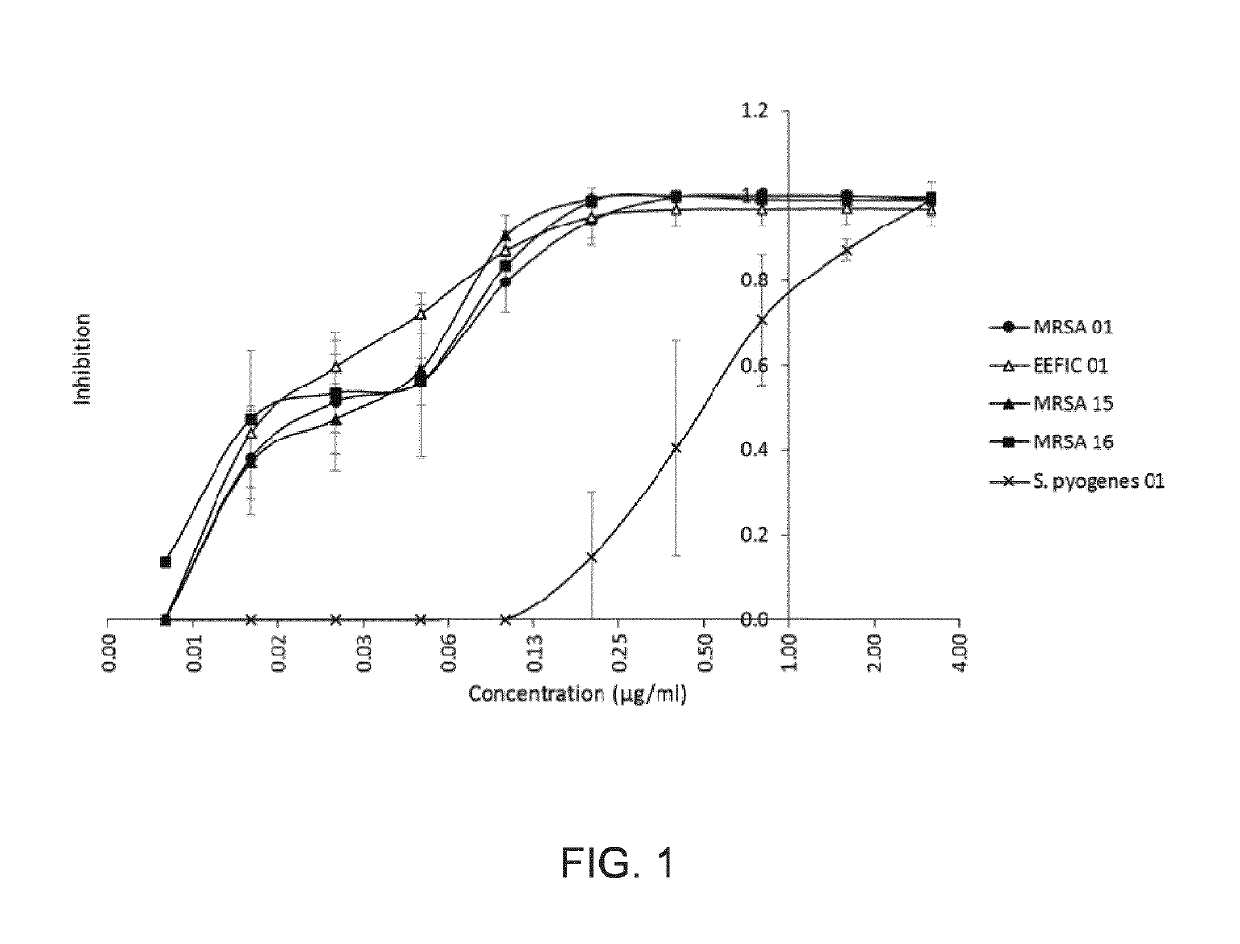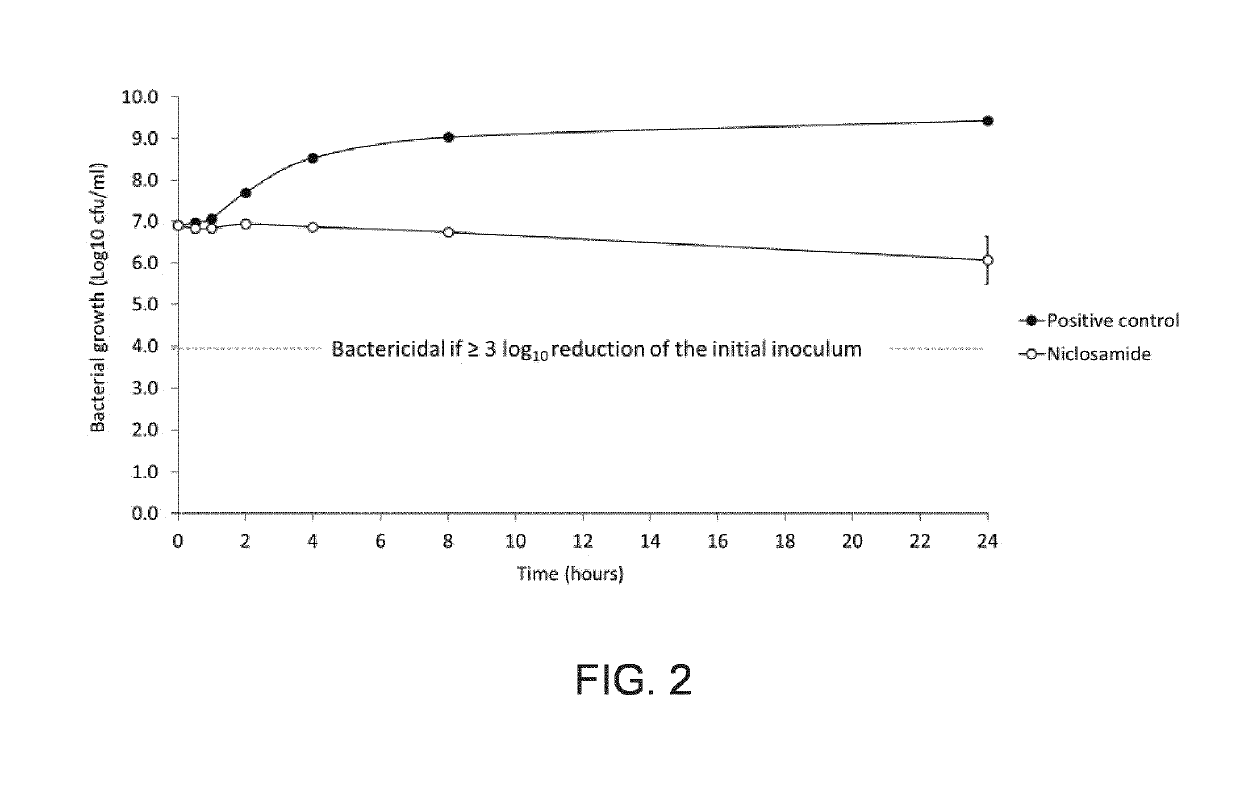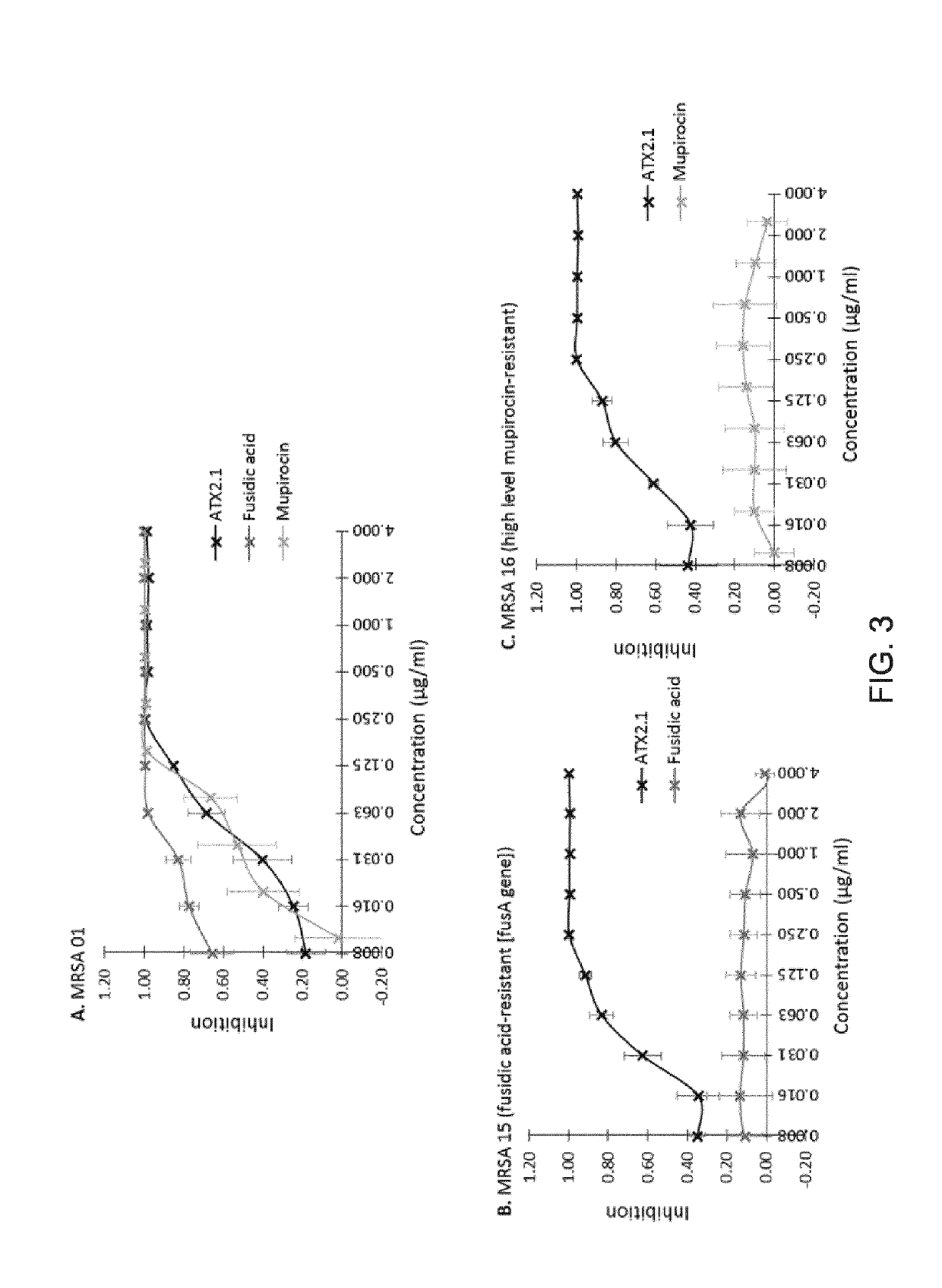Non-aqueous topical compositions comprising a halogenated salicylanilide
a technology of halogenated salicylanilide and topical composition, which is applied in the direction of dermatological disorders, organic active ingredients, pharmaceutical non-active ingredients, etc., can solve the problems of limited topical antibiotics available, the use of fusidic acid as a monotherapy is considered to be a high risk factor in the development of resistance, etc., to achieve high local drug content, potent antibacterial effect, and high permeability
- Summary
- Abstract
- Description
- Claims
- Application Information
AI Technical Summary
Benefits of technology
Problems solved by technology
Method used
Image
Examples
example 1
[0422]Experimental tests were conducted to determine the antibacterial activity and the mutation rate conferring resistance for halogenated salicylanilides and reference compounds.
Microorganisms
[0423]The methicillin-resistant S. aureus (MRSA) 01 strain was used as the primary test microorganism as a representative bacteria commonly found in skin infections. This strain is a community-acquired MRSA clinical isolate of USA 300 type, from a skin abscess.
[0424]Twenty-one other MRSA and methicillin-sensitive S. aureus strains, and 4 Streptococcus pyogenes strains, were also included in the study (Table 2). These covered fusidic acid- and mupirocin-resistant strains, these two types of resistance being of clinical relevance.
[0425]Strains were conserved in Luria Bertani (LB) Broth (S. aureus) or Brain Heart Infusion (BHI) (S. pyogenes) supplemented with glycerol 15% (v / v) at −80° C., and reactivated by isolation on LB (S. aureus) or BHI (S. pyogenes) agar plates. Strains were cultivated in...
example 2
l More Extensive Screen of Clinical Isolates Performed with Niclosamide
Methods
Microorganisms
[0443]Chosen for its relevance regarding bacterial skin infections, the methicillin-resistant S. aureus (MRSA) 01 strain was used as the primary test microorganism. This strain is a community-acquired MRSA clinical isolate of USA 300 type, from a skin abscess.
[0444]Two-hundred-four other MRSA and methicillin-sensitive S. aureus strains, and 4 Streptococcus pyogenes strains, were also included in the study. These covered fusidic acid- and mupirocin-resistant strains, these two types of resistance being of clinical relevance.
[0445]Strains were conserved in Luria Bertani (LB) Broth (S. aureus) or Brain Heart Infusion (BHI) (S. pyogenes) supplemented with glycerol 15% (v / v) at −80° C., and reactivated by isolation on LB (S. aureus) or BHI (S. pyogenes) agar plates. Strains were cultivated in Mueller Hinton (MH) Broth-cation adjusted (S. aureus) or BHI (S. pyogenes). All strains were cultivated ae...
example 3
[0451]A further study was carried out to examine the frequency of spontaneous mutation conferring resistance to niclosamide in 3 methicillin-resistant Staphylococcus aureus strains, including a fusidic acid- and a mupirocin-resistant strains. This frequency was compared with the frequencies of spontaneous mutation conferring resistance to fusidic acid, mupirocin and retapamulin in one MRSA strain.
Methods
Microorganisms
[0452]Three methicillin-resistant Staphylococcus aureus (MRSA) clinical isolates, with different resistance profiles (MRSA 01, MRSA15 [fusidic acid-resistant strain] and MRSA 16 [mupirocin-resistant strain]) were chosen for their relevance regarding bacterial skin infections The MRSA 01 strain was used as the primary test microorganism. This strain is a community-acquired MRSA clinical isolate of USA 300 type, from a skin abscess.
[0453]Strains were conserved in Luria Bertani (LB) Broth supplemented with glycerol 15% (v / v) at −80° C., and reactivated by isolation on LB a...
PUM
| Property | Measurement | Unit |
|---|---|---|
| Temperature | aaaaa | aaaaa |
| Fraction | aaaaa | aaaaa |
| Fraction | aaaaa | aaaaa |
Abstract
Description
Claims
Application Information
 Login to View More
Login to View More - R&D
- Intellectual Property
- Life Sciences
- Materials
- Tech Scout
- Unparalleled Data Quality
- Higher Quality Content
- 60% Fewer Hallucinations
Browse by: Latest US Patents, China's latest patents, Technical Efficacy Thesaurus, Application Domain, Technology Topic, Popular Technical Reports.
© 2025 PatSnap. All rights reserved.Legal|Privacy policy|Modern Slavery Act Transparency Statement|Sitemap|About US| Contact US: help@patsnap.com



